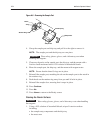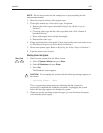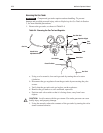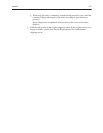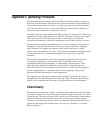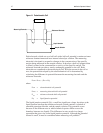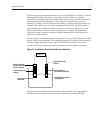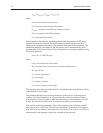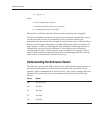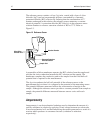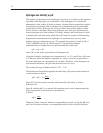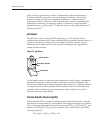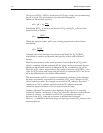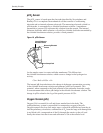
IĆ4 800 Series Operator's Manual
E
cell
= (E
ref
elmt
+ E
memb
) – (E
ref
+ E
lj
)
where
E
cell
= electrochemical cell potential
E
ref
= reference electrode half-cell potential
E
ref
elmt
= potential of the ISE inner reference element
E
memb
= potential of the ISE membrane
E
lj
= liquid junction potential
In this equation, the reference electrode potential and the potential of ISE inner
reference element are constant; the liquid junction potential can be controlled.
Therefore, the potential remaining is the potential generated at the membrane. The
membrane potential corresponds to the ion activity and is related directly to the
concentration of the ion in solution. The cell potential is expressed quantitatively by
the Nernst equation.
9
E
cell
= K + (2.3 RT/ZF) log a
i
where
E
cell
= electrochemical cell potential
K = a constant from various sources such as the liquid junction
R = gas constant
T = absolute temperature
Z = ionic charge
F = Faraday’s constant
a
i
= activity of the ion in the sample
This equation states that the cell potential is logarithmically related to the activity
of the analyte in the sample.
The potential that the sensor actually measures is the activity of the analyte in
solution. In clinical chemistry, it is typical that the results be expressed in the
concentration of total substance rather that the activity of the substance. For this
reason, the measured results must be expressed in units of concentration.
The activity equals the numerical value of the concentration of the ion (mol/L)
times the activity coefficient. The activity coefficient is a measure of the degree
with which the ion interacts with other ions in solution. The activity coefficient is
dimensionless and depends on the ionic strength of the solution.



